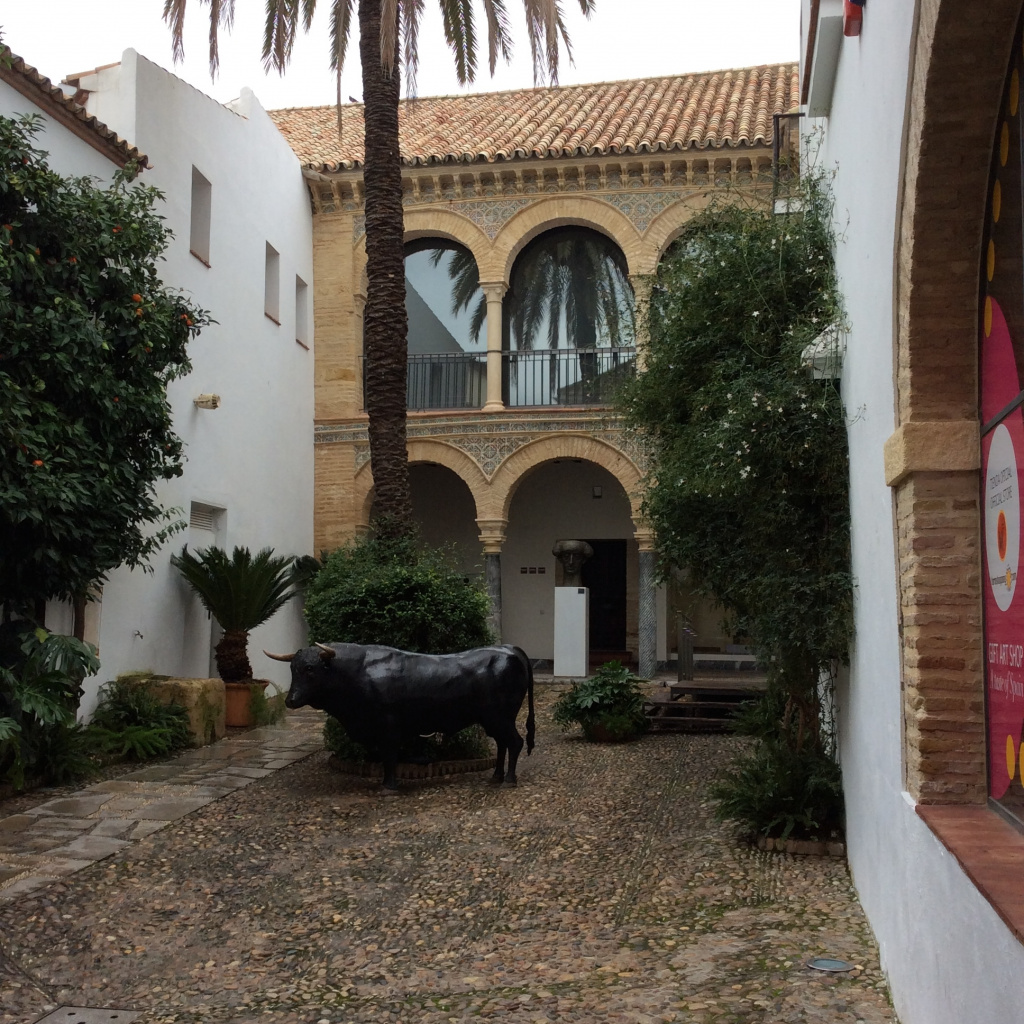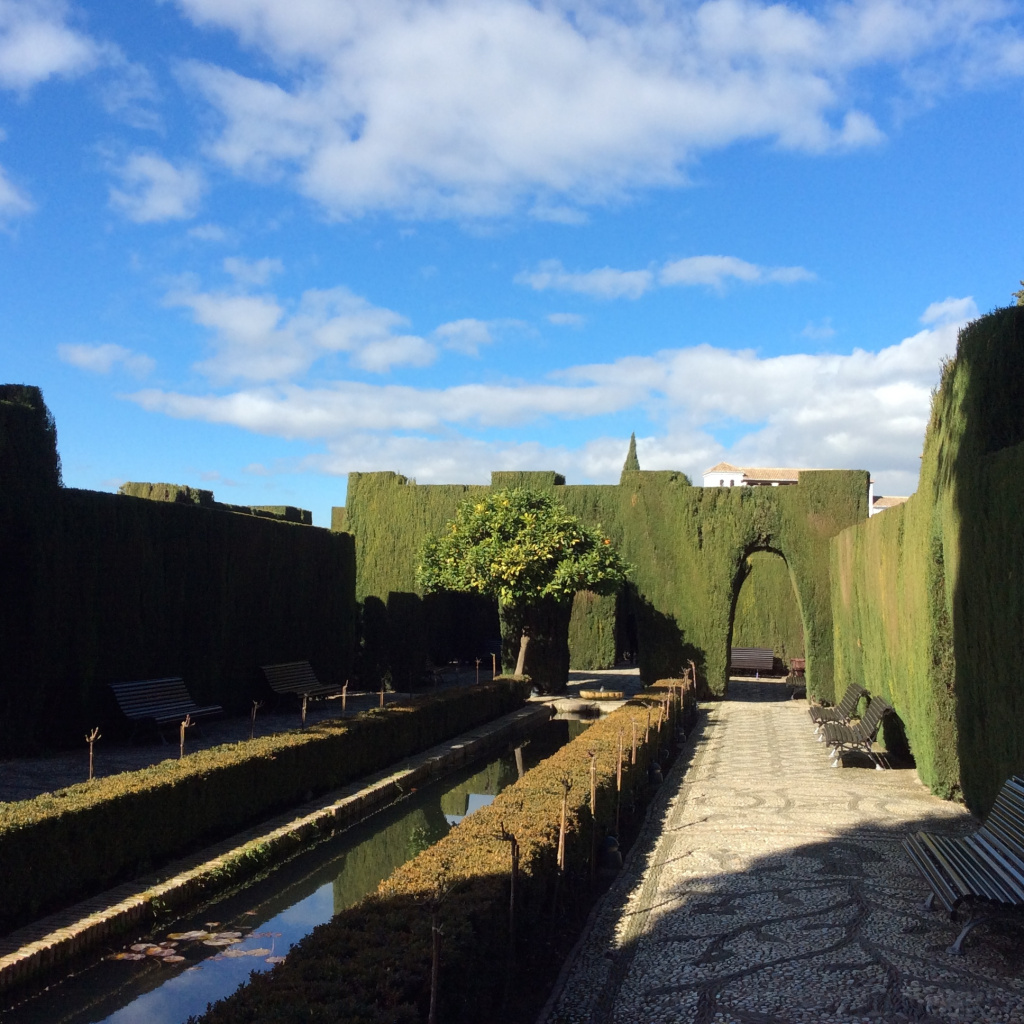The southern ‘triangle’ of Spain - Granada, Cordoba and Seville - impresses with the very rich Moorish architectural heritage. This is the case when for 700 years, the conquerors not only made the Spanish cities look much better, but also gave them a special flavour with the beauty and spirit of the East. Today, the monuments of the cultural influence of the Moors are the fortresses and palaces, ancient mosques, cozy courtyards, and intricate fountains.

It is better to start your acquaintance with the ‘Moresque Triangle’ visiting the more severe Granada, then keep our journey going and visit sunny Cordoba and end your stunning trip in festive Seville. This is the impression that these cities produce, each of them has its own attractions and highlights.
Near Granada, this is undoubtedly the Alhambra (‘Red Fortress’ in Arabic) that is both an unassailable citadel with powerful defensive towers and a luxurious palace complex with unique Arabic ornaments and multicoloured mosaics. Created by the Nasrid dynasty who were the rulers of the Emirate of Granada, it was not destroyed by the Spanish kings and grew into the Renaissance-style palace of Charles V who wanted to make Granada the capital of a huge empire.
One of the reasons, obviously, is the amazing harmony of the Alhambra that fits perfectly well into the surrounding mountain landscape. You feel here the combination of the beauty of nature and human creation, purity of thought, and moral and ethical fortitude. By the way, another possible origin of the name Alhambra is the phrase ‘Dar Al Hamra’, which means ‘House of the Lord’. This version contains a clear allusion to a connection with the Almighty God.
One way or another, the Alhambra is the only well-preserved Moorish palace complex in southern Spain, one of the most famous monuments of Islamic architecture. And there were miracles here. At least, one of them is evidenced by the memorial plaque reading that corporal of the disabled team, José Garcia, threw himself on a powder train fuse when the retreating Napoleonic troops tried to blow up the Alhambra. Thanks to him, today people can admire the Alhambra from the neighbouring hills, and also climb the Watchtower to walk along the walls of the fortress, enjoying the stunning panorama of the city and the river valley.
The most impressive objects of the palace complex are the Alcazaba fortress (from the Arabic word ‘al-qaṣabah’ meaning the ‘citadel’) and the Royal Alcázars of Seville (Real Alcázar de Sevilla; from the Arabic word ‘al-qaṣr’ meaning the ‘fort, castle, or palace’) looking as if they were from the pages of the Arabian Nights’ Entertainments (Thousand and One Nights). The Palace consists of three ensembles, the most harmonious of which seemed to be the Court of the Lions, or Palace of the Lions (Palacio de los Leones), and its cozy courtyard with magnificent arcades supported by 124 columns. And in the quiet of the patio, there is a fountain with twelve marble lions with the murmuring water.
The Alhambra is a man-created fortress and at the same time, it’s a divine creation with its patterned arches and domes, graceful columns, fountains and canals, cypress alleys, orange and pomegranate trees. By the way, it is the pomegranate that is the symbol of Granada, and the name was given to the city in the Moorish period.
In the second third of the 19th century, the Alhambra became a place of pilgrimage for many famous painters and writers from Europe and the United States, including Irving, Byron, Chateaubriand and Hugo.
The source of their inspiration was not only the Alhambra palaces, but also the famous gardens of the Generalife, which are essentially a single palace and park complex. Just like the Alhambra, the Generalife Gardens are included in the UNESCO World Heritage List and are as attractive for tourists as the Alhambra palaces.

This is not surprising, because the Generalife was originally created as an earthly Garden of Eden. It has many different trees that bloom all year round, as well as bushes and flowers blooming every month. My journey was in winter, and I made the photos of blooming gardens in January! However, experts advise visiting these places in the spring when numerous beautiful roses bloom.
One way or another, intending to go to the gardens for just an hour, you are sure to spend at least four hours admiring the surrounding landscape, sunbathing in the sun, or relaxing in the shade, you can find yourself in a real green labyrinth of bush and cypress hedges with platforms and fountains, reflecting pools and canals of ideal geometric forms, nice gazebos, and beautiful flower beds.
All this is ideal for spiritual retreat, for romantic dates, as well as for cultural time. It’s true, there is an open theater where classical music and dance concerts are held.
One of the Gardens’ crown jewels is a very unusual Water Stairway (Escalera del Agua) with the streams of cool water flowing down inverted pan tiles along the stairway parapets looking like canals. This beautiful creation is also part of the hydraulic system of the Alhambra as water from the Royal Canal (Acequia Real) flows along the stairway parapets to the numerous fountains and reservoirs of the complex. And this Water Stairway is protected from the sun by a dome made of laurel and hazel branches which is also a beautiful decoration.
It is curious that when creating the lower garden of the Generalife in the middle of the last century, the restorers used the Arabic style canons. The interweaving of Arabic and European motifs is very typical for southern Spain and they coexist perfectly here. In the 12th-16th centuries, the Mudéjar style was popular in Spain, combining elements of Moorish, Gothic, and Renaissance arts. Most of the buildings in the Mudéjar style of architecture have been preserved in Seville, which gives the city a bright, festive look.
You feel a special interpenetration and mutual enrichment of cultures while you continue your journey through the ‘Moresque Triangle’ and go to Cordoba where the Cathedral Mosque of Mesquite (Mezquita Catedral de Córdoba) was converted into a Catholic church, while most of its interior was preserved.
The heritage of the Moors in Spain, however, is not limited to the southern region. Its influence can be felt in the ancient Spanish capital of Toledo located not far from Madrid, and in many other cities of the country.
Photo courtesy of the author

